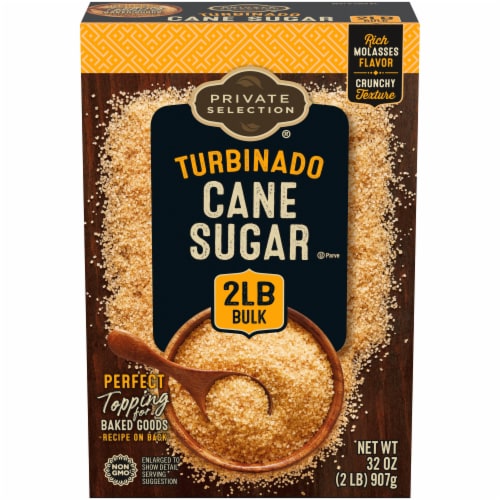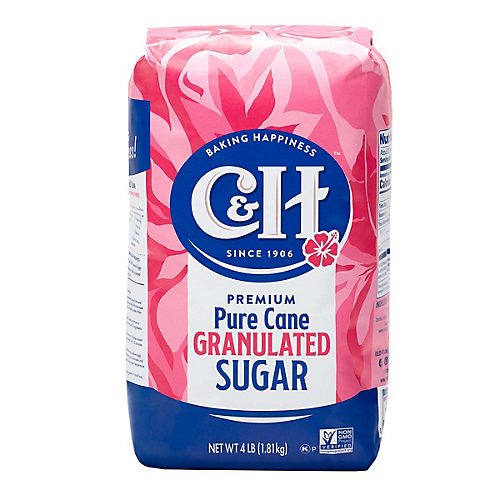A Comprehensive Guide to the Environmental Impact and Sustainability Practices in Cane Sugar Processing
The environmental impact of walking cane sugar processing presents a complex selection of difficulties that warrant careful examination. From dirt deterioration and excessive water use to the carbon footprint linked with cultivation and manufacturing, the repercussions of conventional practices are far-ranging. What particular techniques can be carried out to strike a balance in between efficiency and environmental stewardship?
Review of Walking Stick Sugar Processing
Walking stick sugar processing includes a series of organized steps that change sugarcane into refined sugar. At first, harvested sugarcane is moved to processing centers, where it goes through cleaning to eliminate dirt and debris. Following this, the walking stick is squashed to draw out juice, which is after that cleared up by getting rid of pollutants via heating and the enhancement of lime.
The cleared up juice undertakes evaporation, where water is eliminated to focus the sugar content. This focused syrup is then crystallized via cooling, permitting sugar crystals to form. These crystals are separated from the remaining syrup using centrifugation, resulting in raw sugar. To accomplish refined sugar, the raw item undertakes more purification procedures, which might include filtering system and cleaning to get rid of continuing to be contaminations and color.
The end product is after that dried out and packaged for circulation. Throughout this entire process, maintaining efficiency and top quality control is necessary to ensure the sugar meets industry requirements. Each step in walking stick sugar processing not only adds to the end product but also has implications for resource use and waste generation, setting the phase for conversations on sustainability and ecological influences connected with sugar production.
Environmental Challenges of Production
The production of walking cane sugar offers numerous substantial ecological difficulties that warrant focus. One primary issue is the comprehensive use of agrochemicals, including fertilizers and chemicals, which can result in soil deterioration, biodiversity loss, and contamination of regional water sources. The runoff from sugarcane areas usually lugs these chemicals into nearby communities, disrupting marine life and impacting the wellness of neighborhoods reliant on these water bodies.
One more challenge is the high power usage related to sugarcane handling. The boiling and refining phases require significant warm, primarily created by shedding nonrenewable fuel sources, adding to greenhouse gas discharges. Additionally, the large land area needed for sugarcane growing can lead to deforestation and environment damage, more worsening climate adjustment and threatening wild animals.
Furthermore, the labor techniques in some regions raise moral issues, as employees may encounter bad working problems and inadequate incomes. This circumstance often bolsters a cycle of hardship in local neighborhoods. Cane Sugar Processing. Addressing these ecological challenges is important for developing much more lasting techniques in walking stick sugar production, eventually profiting both the environment and the neighborhoods associated with this industry
Water and Land Usage Influence
Water resources and land use are critical parts in the cane sugar market that significantly affect the atmosphere. The farming of sugarcane requires substantial water input, with quotes recommending that it can consume approximately 2,000 liters of water per kilogram of sugar created. This extensive use water often results in exhaustion of neighborhood water sources, affecting not just the sugarcane plantations however likewise bordering ecological communities and communities that depend on the exact same water sources for agriculture and domestic use.

Moreover, land use for sugarcane farming can bring about deforestation and the conversion of all-natural habitats into monoculture plantations. This method diminishes biodiversity, interrupts neighborhood communities, and adds to soil deterioration. The development of sugarcane fields commonly encroaches on valuable agricultural land, developing competition for resources in between Continue food and biofuel manufacturing.
Sustainable methods, such as enhancing watering techniques and carrying out plant rotation, are vital to mitigate these effects. By embracing extra efficient water usage and land administration approaches, the cane sugar industry can decrease its environmental footprint, ensuring a balance between farming productivity and environmental conservation.
Greenhouse Gas Emissions
Greenhouse gas exhausts stand for a significant ecological problem within the cane sugar handling market, specifically as agricultural techniques expand to meet international need. The cultivation of sugarcane, a crop that thrives in tropical climates, relies heavily on synthetic fertilizers and chemicals, which add to laughing gas exhausts. In addition, land-use adjustments, consisting of logging for new sugarcane vineyards, release carbon dioxide stored in vegetation and soil.
Throughout processing, energy intake is one more major resource of greenhouse gas discharges - Cane Sugar Processing. Numerous sugar mills utilize fossil gas to power equipment and generate warmth, causing considerable carbon impacts. In addition, the transport of raw sugarcane and finished items adds layers of emissions via fuel burning in automobiles
This entails reviewing present farming techniques, processing techniques, and transport systems to identify areas for enhancement and reduction. Addressing greenhouse gas discharges is essential for promoting an extra lasting cane sugar industry in an altering environment.

Lasting Practices and Innovations
Sustainable techniques and technologies are progressively vital in the walking stick sugar processing sector as stakeholders seek to lower environmental impacts while keeping efficiency. One substantial improvement is the implementation of incorporated plant management, which maximizes resource use by incorporating soil management, pest control, and crop turning techniques. This technique enhances yield while decreasing chemical inputs and protecting dirt health.
Furthermore, the fostering of renewable energy resources, such as biomass from sugarcane residues, has gotten grip - Cane Sugar Processing. By converting waste products right into article source power, processing facilities can lower their dependence on nonrenewable fuel sources, thereby reducing greenhouse gas exhausts
Water management methods have actually additionally seen improvements with the recycling and reusing of water in handling plants, dramatically reducing freshwater usage. Advancements in modern technology, such as precision agriculture, enable farmers to keep an eye on crop health and wellness and source use better, guaranteeing lasting growing techniques.
In addition, qualification programs like Fair Profession and Rainforest Alliance encourage environmentally responsible farming techniques and advertise social equity within the supply chain. By welcoming these lasting techniques and technologies, the walking cane sugar handling sector can boost its strength and add favorably to ecological stewardship.
Final Thought
The environmental impact of cane sugar handling provides considerable difficulties, including soil destruction, high water intake, and greenhouse gas exhausts, together with honest issues related to labor practices. Addressing these concerns via lasting techniques, such as incorporated crop management, renewable power adoption, and water recycling, is vital. By promoting socially equitable and eco accountable techniques in sugar production, the sector can reduce its negative impacts, ensuring an extra sustainable future for both neighborhoods and communities associated with this market.
Cane sugar handling includes a collection of methodical steps that change sugarcane into refined sugar. Each action in walking stick sugar handling not only adds to the final helpful site item but additionally has implications for source use and waste generation, establishing the stage for conversations on sustainability and environmental effects linked with sugar manufacturing.
Greenhouse gas discharges stand for a considerable ecological issue within the walking cane sugar processing sector, particularly as farming practices broaden to meet worldwide need.Lasting practices and innovations are significantly essential in the cane sugar handling market as stakeholders seek to reduce ecological influences while maintaining productivity.The environmental effect of cane sugar processing offers substantial challenges, including dirt deterioration, high water intake, and greenhouse gas exhausts, alongside moral problems related to labor practices.
Comments on “Cane Sugar Processing: Typical Approaches and Modern Innovations”